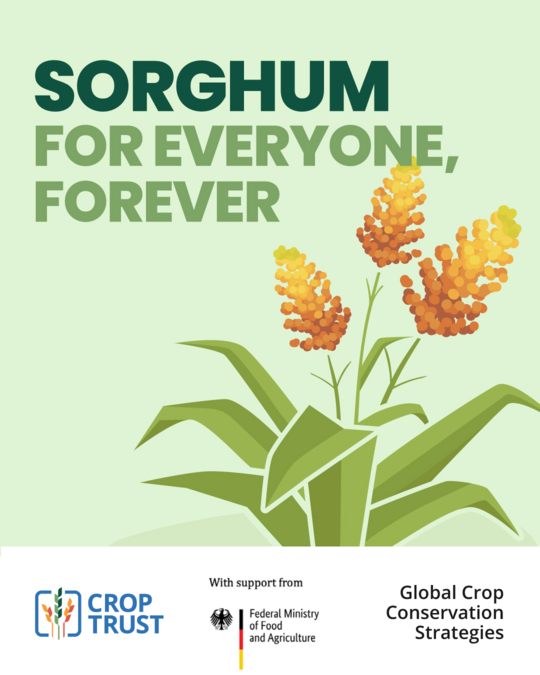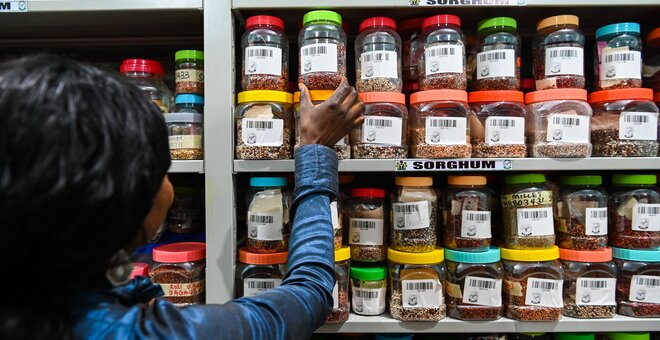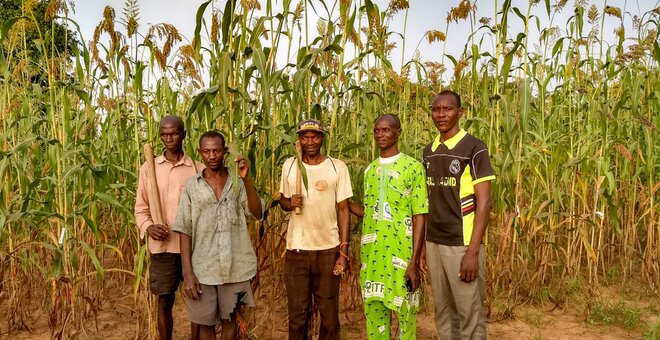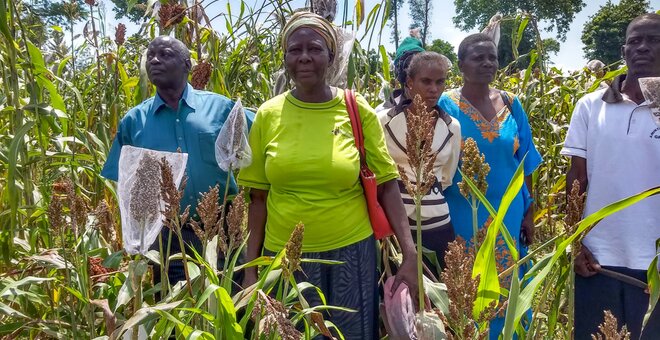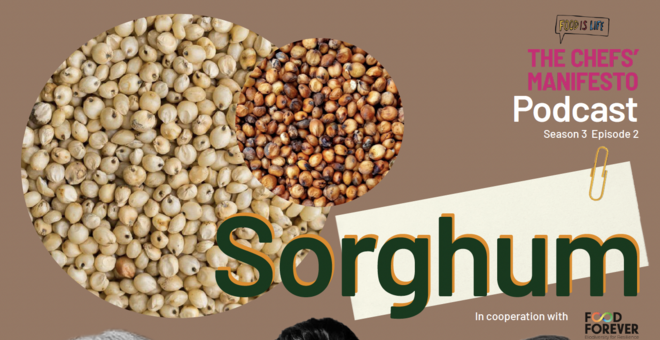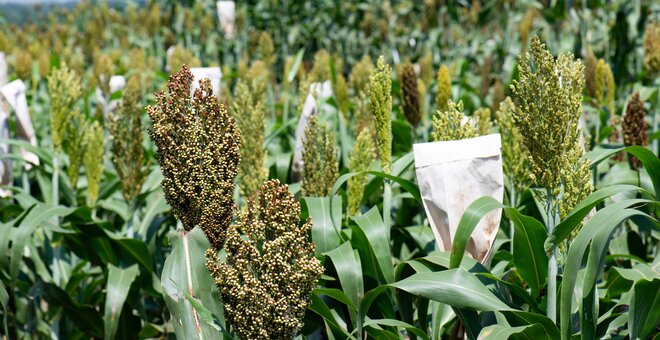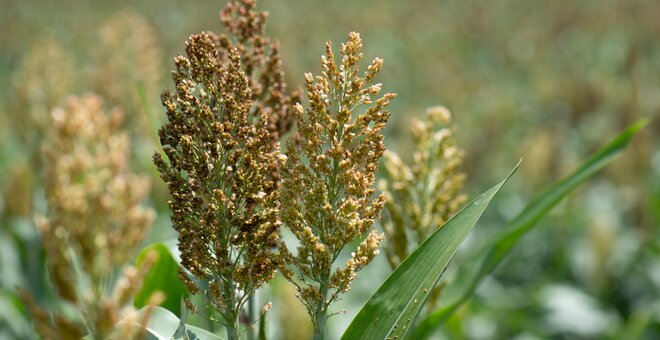The Crop Trust, along with its strategic partners, is developing conservation strategies to protect the genetic diversity of the world’s food crops. This initiative is funded by the German Federal Ministry of Food and Agriculture (BMEL).
One of the world’s oldest cereals, sorghum is known as “the camel of crops” since it can grow in arid soils and withstand prolonged droughts.
Its grain is used as human food and animal feed, it is fermented to make beer and it is ground into flour and used in lots of different foods.
No matter how you use it, sorghum is the cornerstone of food security for millions of people.
But we are losing the diversity of sorghum and its wild relatives.
Together with our partners, the Crop Trust developed a global strategy to conserve that sorghum diversity.
That diversity will help crop breeders develop new varieties that are resilient to climate change and diseases, so that people worldwide can continue using sorghum, forever.
Did you know?
- Sorghum [Sorghum bicolor (L.) Moench] is a widely adapted cereal crop that can be grown in diverse ecological situations in semi-arid, sub-tropical, tropical and temperate climates.
- It is the fifth most important grain crop internationally.
- While sorghum is grown in much of the world as a feed and fodder crop, it is also a staple food for millions of people in the semi-arid regions of Africa and South Asia.
- Sorghum is mainly grown on marginal, rainfed land that is subject to periodic droughts.
- In some areas of the world, such as the United States, Mexico, Argentina, Brazil, Australia, China and Japan, it is an important feed crop with a significant value from trade.
- The United States is the largest producer of sorghum globally, but China is the largest consumer.
- The sorghum production area has declined in most regions of the world except Africa, where it is an important crop for household food security and contributes to alleviating poverty, but also has significant cultural value.
- Sorghum was domesticated in the Ethiopia-Sudan region of Northeast Africa
Related stories about sorghum
Building a Toolbox of Sorghum Diversity
The wild, weedy relatives of our cultivated crops display all kinds of useful traits their domesticated cousins lack – traits that could make our agriculture more resilient to future challenges.
But it takes a lot of time and...
17 Feb 2023
Farmers in Mali Go Wild for Sorghum
Moïse Mounkoro held three cards in his hand – one red, one yellow and one white. He felt like he was the football umpire in his local village of Sokoro in east central Mali.
He pulled out a red card, not to eject a player from...
30 Jan 2023
Kenyan Farmers Welcome “Exotic” Sorghum
ICSWC 14RS 00020-3-47-1:201704 may be a mouthful, but to Kenyan farmers it could spell food security and better livelihood.
24 Jan 2023
Chefs' Manifesto Podcast - Sorghum: the Camel of Crops
Season 3 - Episode 2
This episode focuses on sorghum, an under-appreciated crop mainly grown in Africa. Chef Ali Mandhry, a sorghum champion, shares recipes and his passion for this crop while working from his home in Mombasa,...
1 Feb 2021
Wild Sorghum Offers Toolbox for Climate-Proofing Future Crops
Harnessing useful traits found in the weedy distant cousins (“wild relatives”) of domesticated crops to develop more climate-resilient varieties is a lengthy and complex process.
Wild relatives of the arid-zone grain sorghum have...
15 Jul 2021
15 Jul 2021
Stay-Green Sorghum to the Rescue
The arid-zone grain sorghum can be made even more tolerant of drought, new research shows.
Drought tolerance in sorghum—the world’s fifth most important cereal crop—is measured in a number of different ways, including by looking...
23 Feb 2021
23 Feb 2021

